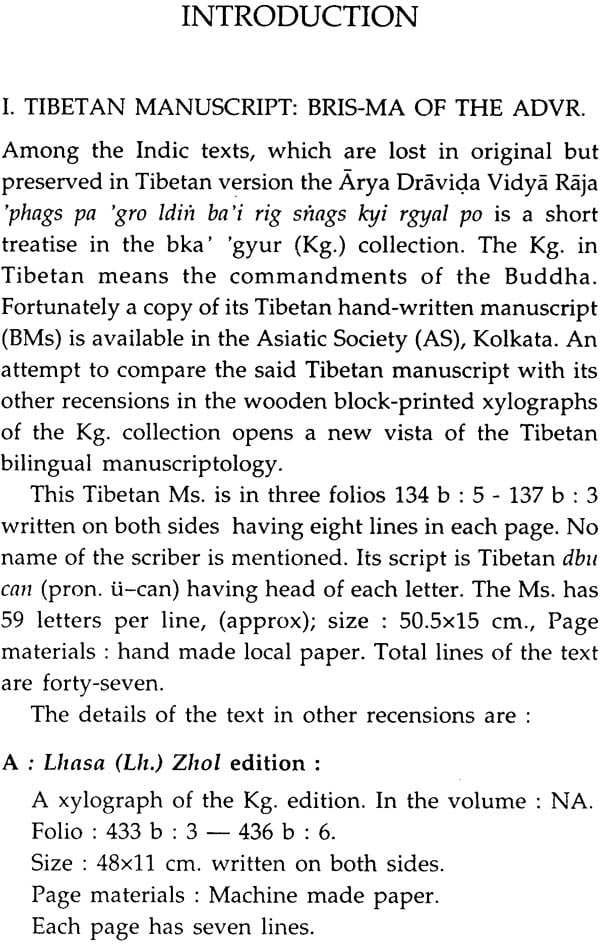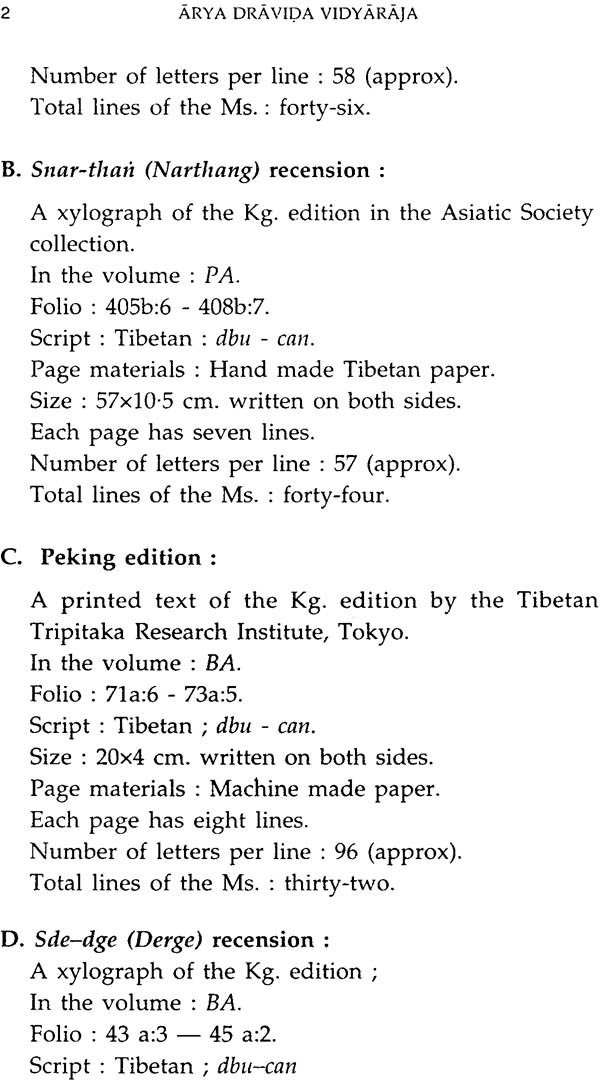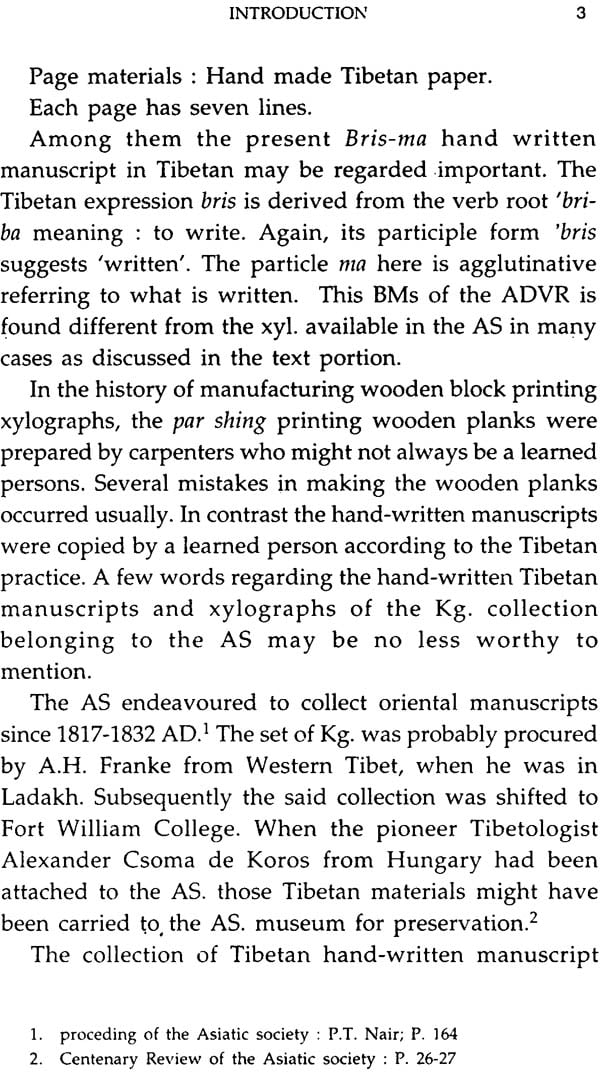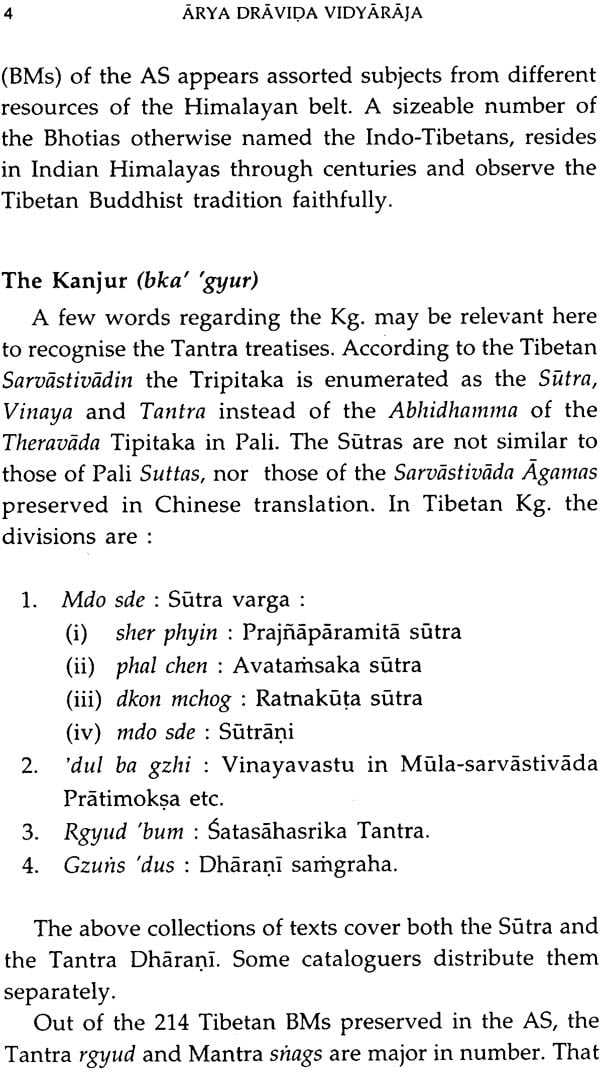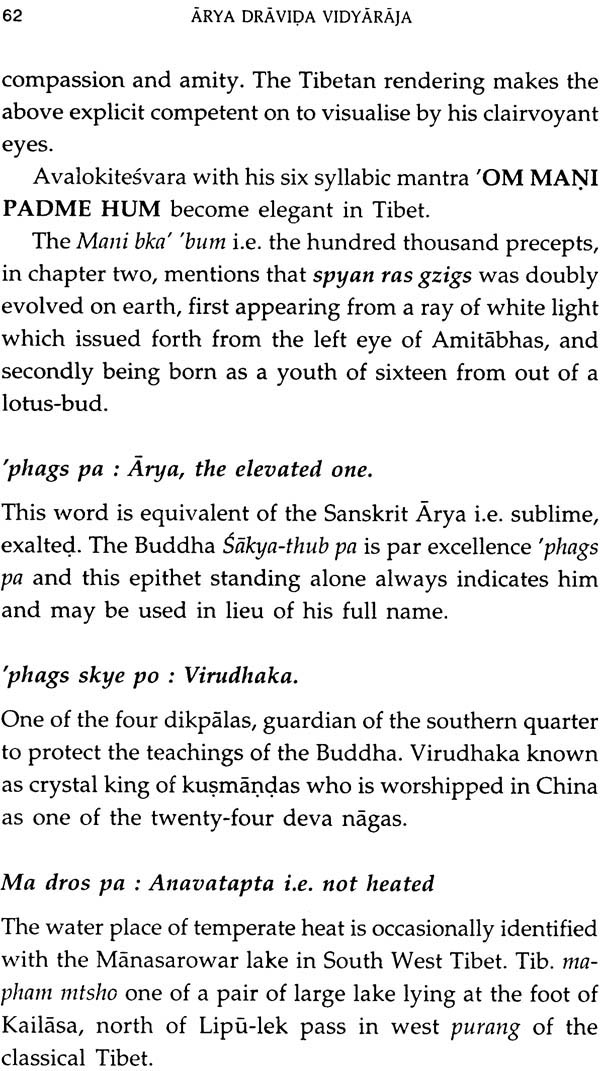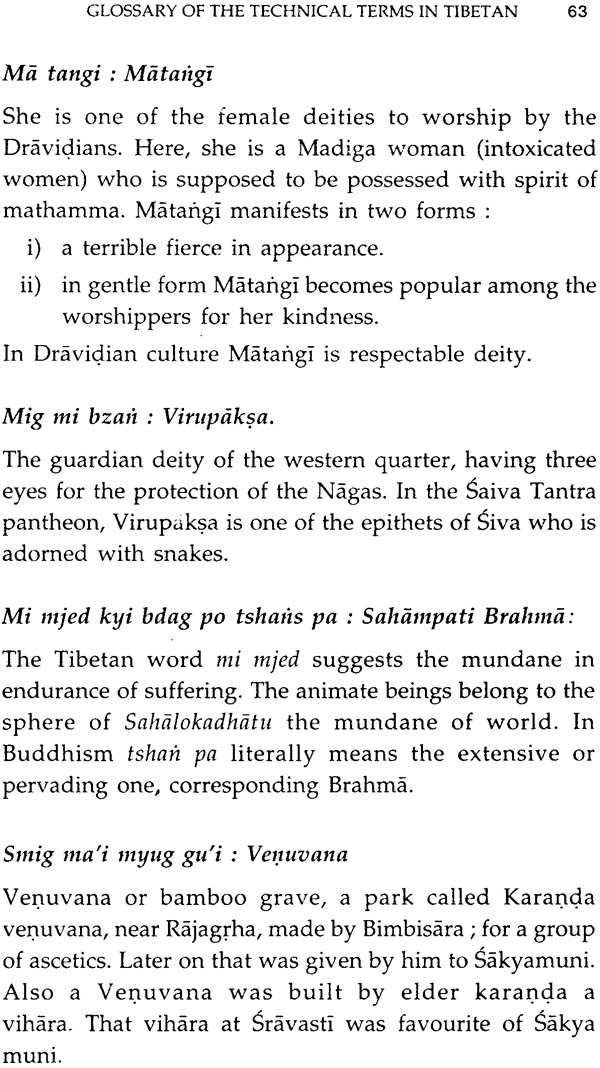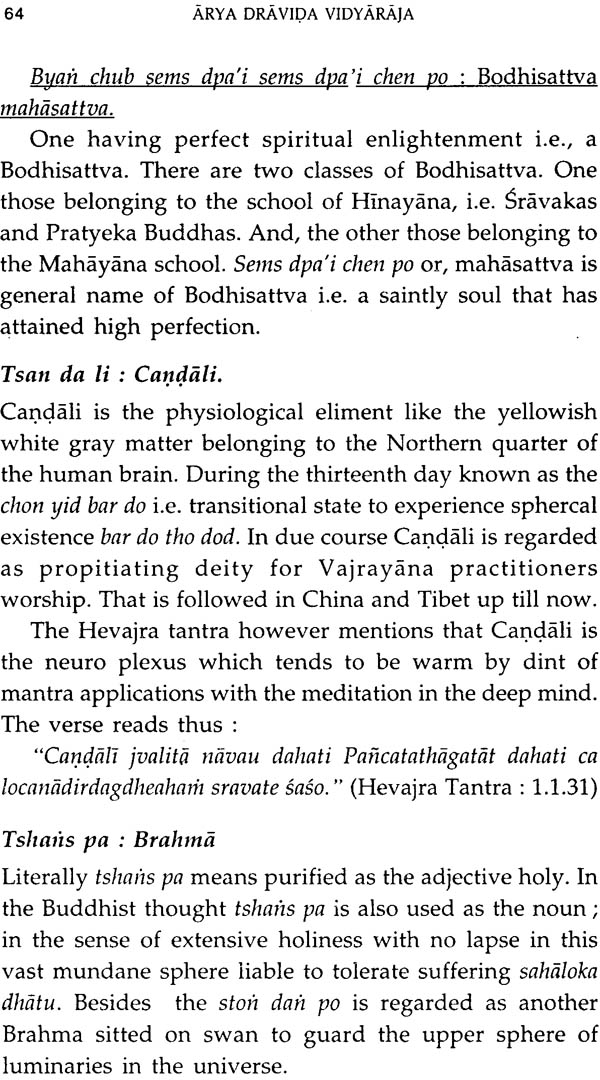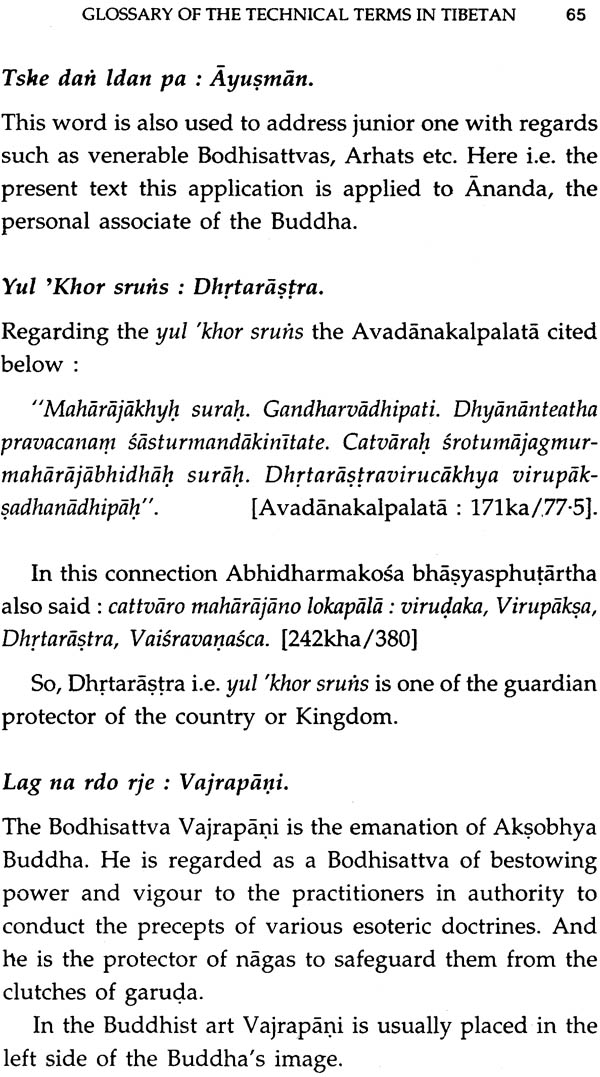
Arya Dravida Vidyaraja (Phags Pa'Groldin Ba'Irig Snags Kyi Rgyal Pc)
Book Specification
| Item Code: | NAD250 |
| Author: | Bhakti De |
| Publisher: | The Asiatic Society |
| Edition: | 2009 |
| Pages: | 108 |
| Cover: | Hardcover |
| Other Details | 8.5 inch x 5.5 inch |
| Weight | 240 gm |
Book Description
Dr. Bhakti De was born at Midnapore (West). She did her graduation with honours in Bengali Literature, post- graduation also in Bengali Literature and B.Ed. from Calcutta University. She did her Diploma in Tibetan Language and Literature and Ph D on Buddhism and its influence on the Bengali Literature both from Visvabharati, Santiniketan
. She has to her credit two books and research articles in English and Bengali have been published in different periodicals.
She has been working as Tibetan Cataloguer in the Asiatic Society since 1993.
This text belonged to an obscure cult among the Indian Tantra practitioners. Arya Drãvida Vidya-Raja is one of the new Tantra texts of unique nature having its Dhãrani in order to save the practitioners from the evils ahead. This book throws more light in application of the sono-efficacy of mantra syllables in Dhãrani. The collection and explanation of the Dharanimantras in this volume constitute a valuable contribution to Tibetan studies.
This is a Tibetan work dealing with what is called DRAMILAVIDYA, which was developed by an obscure cult of Indian Tantrikas, who believed that the correct utterance of certain Mantra-syllables in Dharani might remove poison from the body, and cure certain diseases. This work throws light on esoteric practices, which are derivatives of a system of quackery, prevalent in an undeveloped social system. The collection and explanation of the Dharaimantras in this volume constitute a valuable contribution to Tibetan studies, for which the author deserves the appreciation of the scholars.
Arya-Drãvida (Drãmila) Vidyã-rãja requires a few words to introduce as the text belonged to an obscure cult among the Indian Tantra practitioners. The Naga cult, tabooed with poison deal in the hoary olden days, had been controlled by the practitioners of the Garuividyã. The puraIic evidences of enmity between the Naga(s) and the Gãrua(s) delineate with episode. Its Buddhist relevance has been depicted in the Nagananda-nalakam ascribed to Shri-Harsa available in Sanskrit and its Tibetan rendering with the Bodhisattva ideal. The present text edited by Dr. Bhakti De and published by the Asiatic Society, Kolkata throws more light in application of the sono-efficacy of mantra syllables in Dhãrani. The episode element in background substantiates the appeasement of wrath in spreading venom by the serpent king by the request of Buddha who blessed them all. Thereafter the snakes have promised not to use their poisonous fangs unless they are disturbed in their peaceful living.
| Foreword | iii | |
| Pref ace | ix | |
| Preamble | xi | |
| Abbreviations | xlii | |
| Introduction | I | |
| i. | Tibetan Manuscript (Bris-ma) of the ADVR | 1 |
| ii. | The Tib. title and Skt. drãmila | 6 |
| iii. | Subject matter of the ADVR | 11 |
| iv. | Mantras : snags in the ADVR | 19 |
| v. | The ADVR: An important Dhärani mantra text | 22 |
| vi. | Translators | 28 |
| The Tibetan Manuscript (‘Phags pa ‘gro ldiñ ba’i rig snags kyi rgyal po) with critical readings,variations, English translation of the ADVR | 31 | |
| Notes of the English Translation | 52 | |
| Glossary of the Technical terms in Tibetan | 54 | |
| i. | Word index : Tibetan to English | 69 |
| ii. | A list of Buddhist technical words | 77 |
| Appendix | 79 | |
| Selected Bibliography | 90 |
